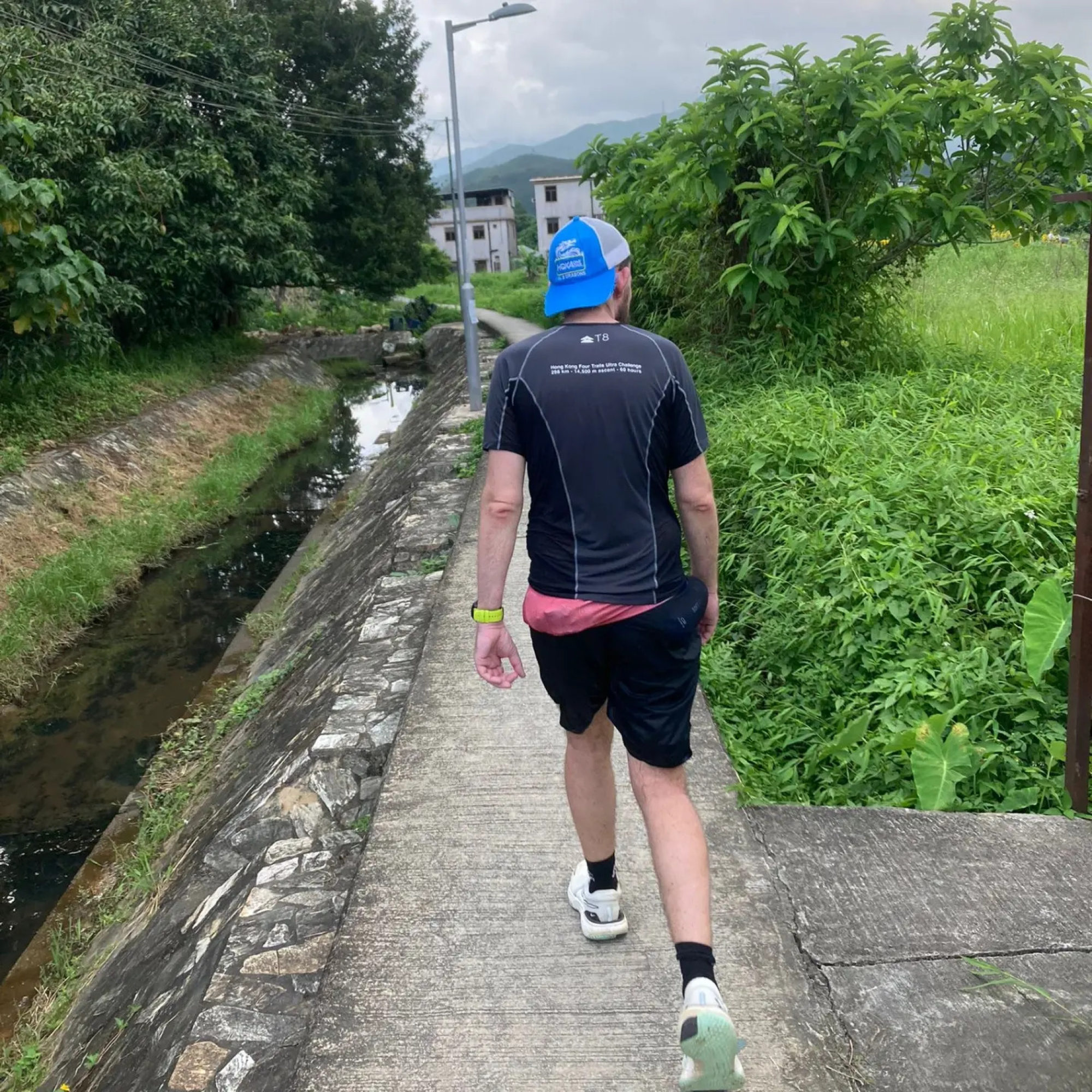
Following in footsteps of Hong Kong’s first ultra runners, Carr discovers why they called race across city ‘madness’
- Steve Carr takes part of the route from Stanley to Sha Tau Kok and learns why the event was called ‘mid-May madness’
- The first race was in 1976 and only one runner, Bob Bailey, reached the finish line
In 1976, a small group attempted to run from Hong Kong’s most southerly police station in Stanley, to its most northerly in Sha Tau Kok. Only one, Roy Bailey, finished. The event became an annual challenge called mid-May madness because of the extreme heat.
Carr, 43, heard about the route and was immediately inspired to tackle it himself.
“I think it’s cool to do this kind of thing. I like narratives and the story behind it,” Carr said. “Running a normal 50km, it’s great, it’s good fun, but it’s not necessarily cool. It’s not replicating anything.
“Whether it’s a story because it’s been done in the past and it’s kind of disappeared in the narrative, or whether it’s just someone doing something that is on the cusp of failure, that kind of stuff is cool to me.”
Having said that, Carr did not do the whole route. He started from Tsim Sha Tsui and ran to the border, a distance of about 45km compared to the original route that was around 55km.
“Doing the whole thing at the end of May is just stupidity because it’s too hot. I’d be dead by lunchtime,” Carr said.

Carr finished in six hours and 20 minutes. Roy Bailey finished in 5:14 on his first run, and by 1979, the record was reduced to 4.06:15 by Steve Reels.
“In the heat, they did it in such a fast time as well,” Carr said. “And with nothing. I’ve seen photos of what they’re wearing you like three inch shorts and a pair beat up running shoes and they’re blasting through it. It is kind of fascinated me.”
The original race had no official route. Runners picked their way across Hong Kong depending on their preference. They often ran on the train tracks, which were closed to the public in the 1980s when they were electrified.
By contrast, Carr had to negotiate different roads and crowds.
“I didn’t have such a direct route,” Carr said. “It took me an hour and 10 minutes to get through TST, which is only 8.5km because I was going in and out.”
Carr spent much of his run contemplating the original runners, not just their performance but also the camaraderie they must have felt, doing something so unusual.
“I wondered whether back then there must have been people just staring at them in disbelief,” he said. “And people at the end asking ‘where did you run from?’
“The concept of Stanley to out there must have been so surreal for people, whereas now ‘it’s only 55km’.”
To make matters more difficult, Carr had a hairline fracture in knee cap just a few weeks before the run. It was so painful, that in the last few kilometres he stopped running.
Carr hopes to return to complete the whole route when his knee has healed and it is cooler.
Despite its new-found fame, Carr doubts the route will ever be an official event because getting the permits to run through all the different regions would be a logistical nightmare.
However, Carr, who manages a race company called RaceBase, does hope others will take up the challenge and compete among themselves to set the fastest time.
“Is there someone in Hong Kong who could run that as fast as those original guys?” Carr said. “I genuinely don’t think anyone could just because the route is so much more convoluted now.
“I knew the history of certain races and certain events and certain running in Hong Kong because I’ve always looked backwards before organising the races that I organise.
“But I’d never heard of this. It seemed to be a footnote in the history of running. The did something really cool, really epic, and no one knows.”

